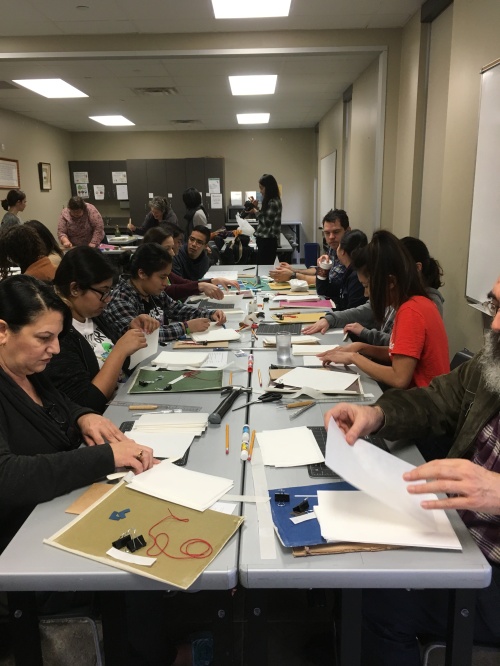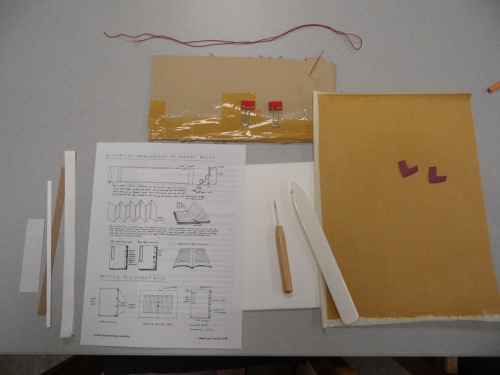Thanks to the CLS Alumni Development Fund, I was able to conduct a series of workshops on Korean book and paper in Austin, Davis, and San Francisco this year. This was the first time since being back from Korea that I was able to apply and teach many of the things I had learned on the Fulbright, and I was very grateful for the experience. The grant also provided a good reason to revive this journal, which, though no longer being written in Korea, is still very much alive here in California! This entry will be the first installment in a three-part series on Korean book and paper workshops, sponsored in part by the CLS ADF grant. Feel free to use the following links to read the other parts of this series:
- Korean Bookmaking Workshop (this is what you are currently reading!)
- Korean Paper Workshop
- Hanji in California

The Korean bookmaking workshop took place in February at the Asian American Resource Center in Austin, TX, and then again in March at UC Davis through the East Asian Studies program. While at Austin, my project-mates Yung-ju Kim (whom I met during the Fulbright) and Kathy Hill (whom I met during CLS) helped set up the 3-hour event, which included a PowerPoint presentation, handout, burnishing demonstration, and hands-on workshop that resulted in a Korean-style side stitched book.

The turnout was great — we easily filled 20 spots and even had to turn people away at the door! We had a range of participants including high school students, an older Korean couple, an art instructor, a zine artist, and a former Fulbrighter. Almost none of them had previous binding experience! And yet they all managed to finish their books within the allotted time, and I thought their books looked pretty great!

For this and future workshops, I ordered two woodblocks carved with traditional patterns from a woodcarver in Gangwon Province named 이창석, son of 이운천, an intangible cultural asset holder. My teacher and friend from Kyujanggak helped me place the order. Using these woodblocks and the methods I learned in Korea, workshop participants took turns burnishing their book covers with wax and a burnishing stone.

In preparation for the workshop, I lined colored hanji with two layers of thinner white hanji to make a thick sheet. The technique I used is outlined here. Without a proper conservation/mounting studio, the lining process was difficult and took many nights to complete. I felt like I was cooking and mixing paste everyday, for many days in a row. But with Daniel’s help, we managed to produce enough lined hanji for the workshop. Each participant got one sheet of lined hanji to burnish, and then cut the sheet in half to make their book covers.


Since I did not know the skill level of the group, I prepared punching jigs that helped students with locating where to hammer binding holes in their books. I knew students would be sharing tools, so I tried to keep everything as simple as possible with the least amount of measuring required. This was absolutely necessary with such a large group and limited time.



The following month, I taught the same workshop again at UC Davis, this time for a smaller group of about 10 participants and for only 2 hours. Professor Kyu Hyun Kim from the History department introduced me, and Professor Yuming He, who was teaching a class on Histories of the Book and Reading, brought her entire seminar to participate in the workshop.

This time I was better prepared and cut everything in advance. I had to bring all my own tools, so I tweaked the workshop such that cutting mats and x-acto knives were not necessary to make the book.

I also used a different type of hanji to line the cover paper, which I think resulted in better burnishing results.

Though the paper is supposed to be dampened before burnishing, due to time constraints we skipped dampening during both workshops. I think the results were still pretty good, all things considered!


It was wonderful to be able to offer FREE workshops to the public! Thanks to CLS ADF for allowing me to make this happen.
Next up: Korean Paper Workshop at the Materials Lab at UT Austin.


